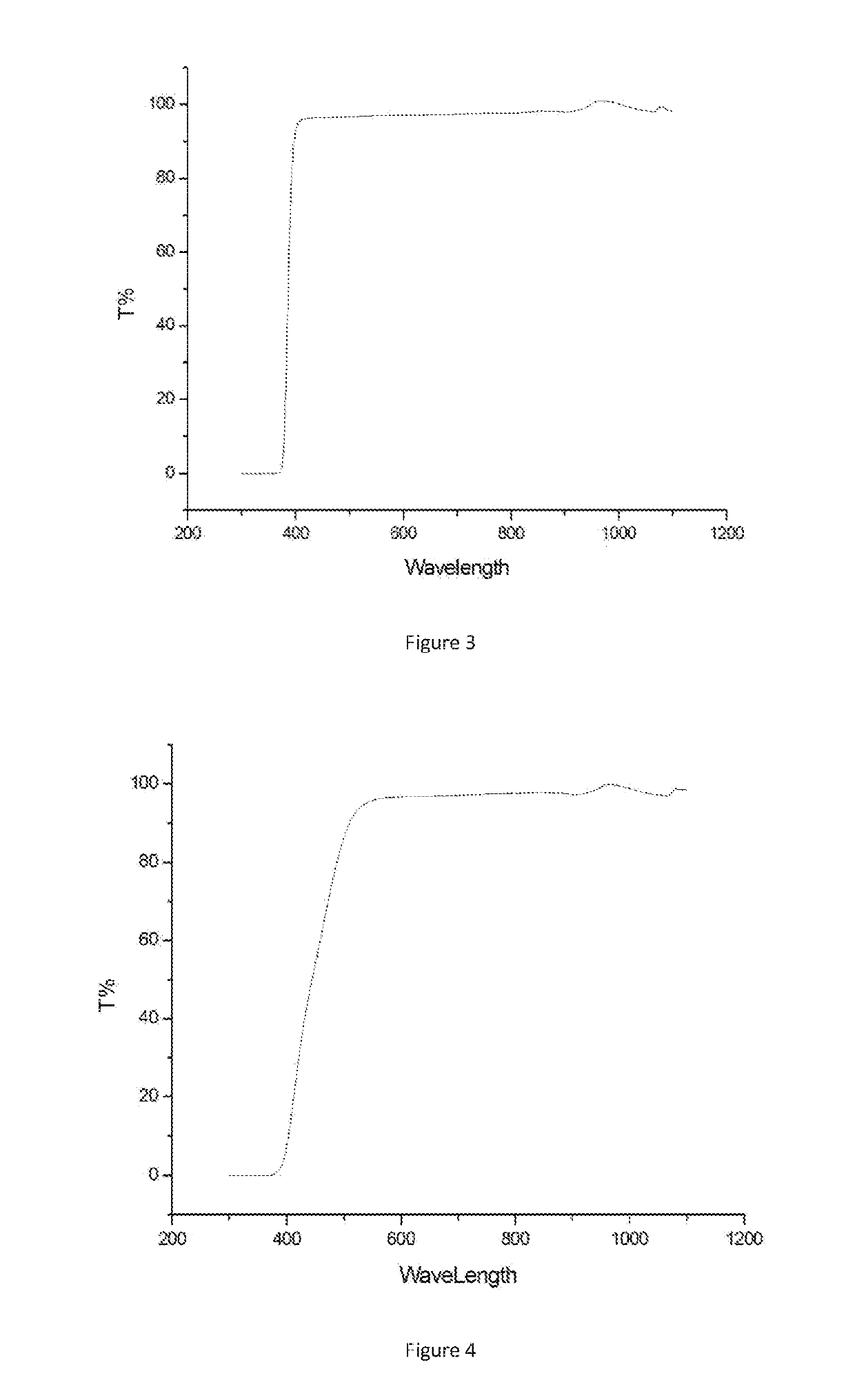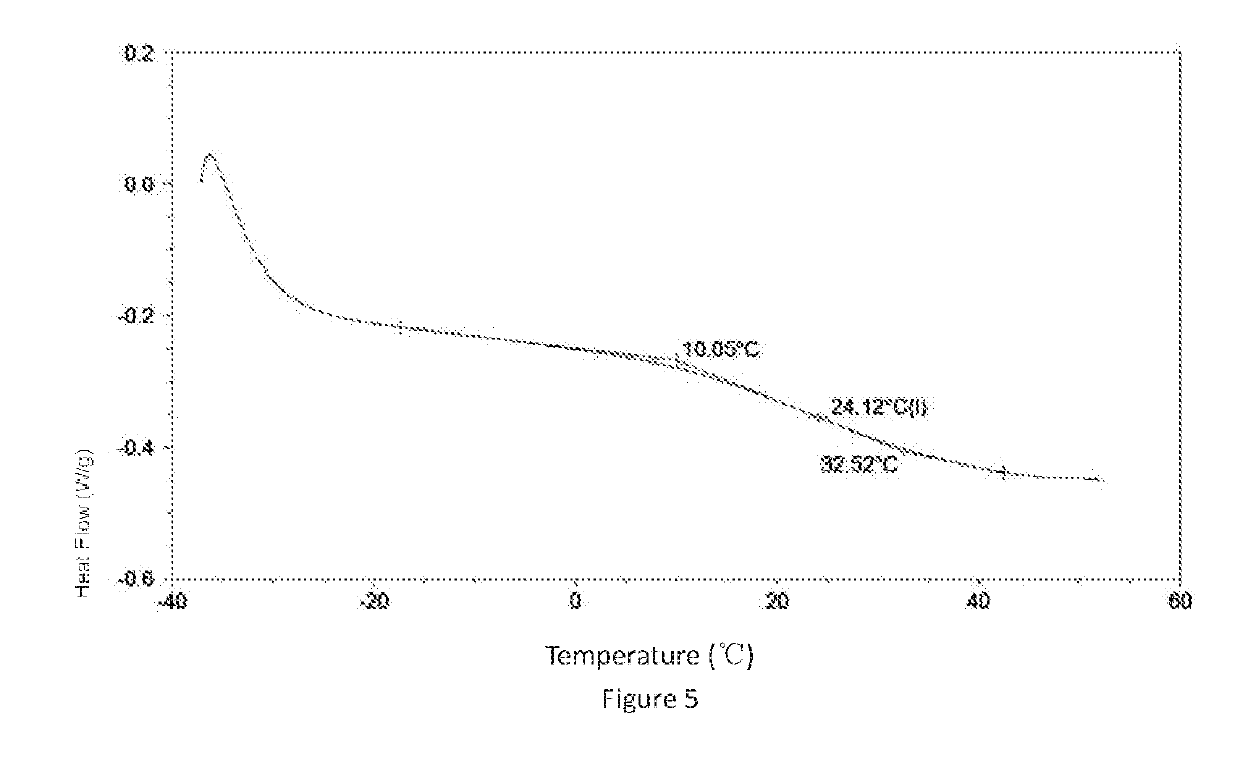Materials for Preparing Intraocular Lens
a technology for intraocular lens and materials, which is applied in the field of ophthalmic medical materials, can solve the problems that the products of intraocular lens on the current market are still not able to perfectly satisfy the micro incision surgery, and achieve the effects of low processing temperature and other conditions, and thin thickness
- Summary
- Abstract
- Description
- Claims
- Application Information
AI Technical Summary
Benefits of technology
Problems solved by technology
Method used
Image
Examples
example
[0099]Hereinafter, the present invention will be described in more detail by means of specific examples, but the examples provided are only illustrative and not intended to limit the present invention.
[0100]Examples 1-26 shown in Table 1 illustrate the materials of the present invention. All the examples in Table 1 were prepared in the following manner and all the monomers were purified by distillation under reduced pressure. In a 250-ml beaker, all the required monomers were mixed in respective proportions, initiators and light absorbents were added, stirred well and filtered, and transferred to a special mold. The various vessels and molds used in the above-mentioned implementation process were cleaned, dried and sterilized before use.
[0101]Nitrogen was blown into the monomer solution in the mold, and the mold was sealed under nitrogen protection. The mold was then placed in a water bath at a set temperature for polymerization for at least 24 hours, and then the mold was transferr...
example 27
n of Intraocular Lens
[0102]The intraocular lens was processed with the prepared material: the material is turned at room temperature to divide the prepared polymer material into a IOL billet having a thickness of about 3 mm and a diameter of about 16 mm, and then turned on a single-point diamond lathe (OPTOFORM) to shape. After shaping, the intraocular lens was polished by the polishing medium, and the surface was cleaned and hydrated by rinsing into physiological saline to obtain a water-absorbing balance, and the intraocular lens was obtained. The resulting intraocular lens was stored in sterile physiological saline.
[0103]Table 2 shows schematically some of the examples of the intraocular lens prepared by the partial material of the present invention. The parameters involved in the table include: D-IOL diopter in the human eye; n—refractive index; CT—intraocular lens center thickness; Ra—radius of curvature of the front surface (the surface of the IOL farther from the retina); Rp—...
example 28
ransmittance of an Intraocular Lens Made of the Material
[0105]This example illustrates a method for measuring the spectral transmittance of an intraocular lens to evaluate the spectral transmittance of the material. the transmittance of the intraocular lens made of the materials of Examples 6 and 22 in the visible region is measured by using a spectrophotometer, wherein the instrument is UV-3300 type UV-Vis spectrophotometer from MAPADA, which has a wavelength scanning range of 300-1100 nm. The spectral transmittance curve is shown in FIG. 3 and FIG. 4. Example 6 is an ultraviolet absorbing type, and Example 22 is a blue filtered type, which filter harmful ultraviolet and blue light. The average spectral transmittance in the visible light range is >95%, and the spectral transmission performance is excellent. It is suitable for preparing intraocular lens.
PUM
| Property | Measurement | Unit |
|---|---|---|
| refractive index | aaaaa | aaaaa |
| glass transition temperature | aaaaa | aaaaa |
| breaking strength | aaaaa | aaaaa |
Abstract
Description
Claims
Application Information
 Login to View More
Login to View More - R&D
- Intellectual Property
- Life Sciences
- Materials
- Tech Scout
- Unparalleled Data Quality
- Higher Quality Content
- 60% Fewer Hallucinations
Browse by: Latest US Patents, China's latest patents, Technical Efficacy Thesaurus, Application Domain, Technology Topic, Popular Technical Reports.
© 2025 PatSnap. All rights reserved.Legal|Privacy policy|Modern Slavery Act Transparency Statement|Sitemap|About US| Contact US: help@patsnap.com



